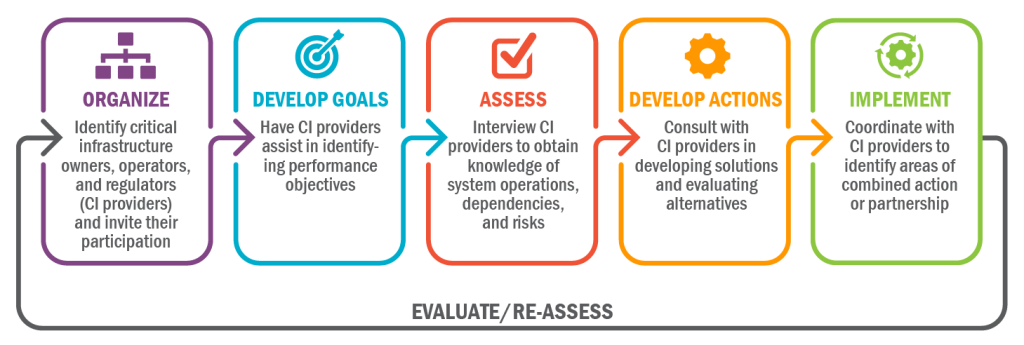Stakeholder Involvement
Identifying the providers of critical infrastructure services that a community depends on and involving them in considering dependencies is an important initial step in planning for resilience.
Effective planning often requires diverse participation to recognize and manage risk from dependencies. Infrastructure stakeholders who should be engaged include public and private service providers who can provide input about critical infrastructure considered essential to the regular functioning of the community. Infrastructure systems are operated and regulated by a diverse series of public and private stakeholders. Since planning is often led in the public sector, private sector stakeholders can be underrepresented, but can be very important to planning efforts.
Think Outside Usual Planning Participants
By thinking about infrastructure dependencies, a planner can identify participants who would not normally be involved in the planning process but are important to it. For example, planners should consider what systems, businesses, or industries provide for the social, economic, and physical health of the community. This may lead to identification of infrastructure providers, operators, owners, and managers outside of the planning jurisdiction(s). Moreover, many states and localities operate formal public-private partnership programs and Business Emergency Operations Centers who operate or have a stake in infrastructure resilience.
Identifying dependencies may involve a diverse array of public officials, utility owners, and private sector operators. For example, those interacting between the water and communications systems, as illustrated in the following graphic.

In addition, within an infrastructure system there may be many operators, both public and private, that contribute to system operation. For example, a pipeline may have an overall pipeline operator as well as multiple independent terminal operators coordinating with Federal, state, and local officials who regulate operations, manage rights-of-way, and support incident response. Because of these diverse parties and overlapping roles, planning activities often benefit from broad public and private sector participation.
Example infrastructure stakeholders to involve in planning:
|
Why to Include Infrastructure Stakeholders
Partners from key infrastructure sectors can offer vital insights and perspectives about their systems that can lead to the identification of resilience challenges as well as options for improving resilience. Infrastructure owners and operators provide direct knowledge of their systems such as operational capacity, performance parameters, service priorities, and recovery capabilities. By having the right people at the table, dependency discussions are likely to be more accurate and result in more effective resilience strategies. Additionally, diverse stakeholder involvement may yield benefits such as opportunities for public-private partnerships and investment sharing.
How to Include Infrastructure Stakeholders
As illustrated below, critical infrastructure provider stakeholders, who are often overlooked in planning, can be beneficially integrated into any planning process.

Infrastructure stakeholders can be involved in community resilience planning through various methods, including interviews, planning meetings, organized discussion sessions, or surveys. Tools for getting infrastructure stakeholders involved in planning are included in the Infrastructure Resilience Planning Framework.




